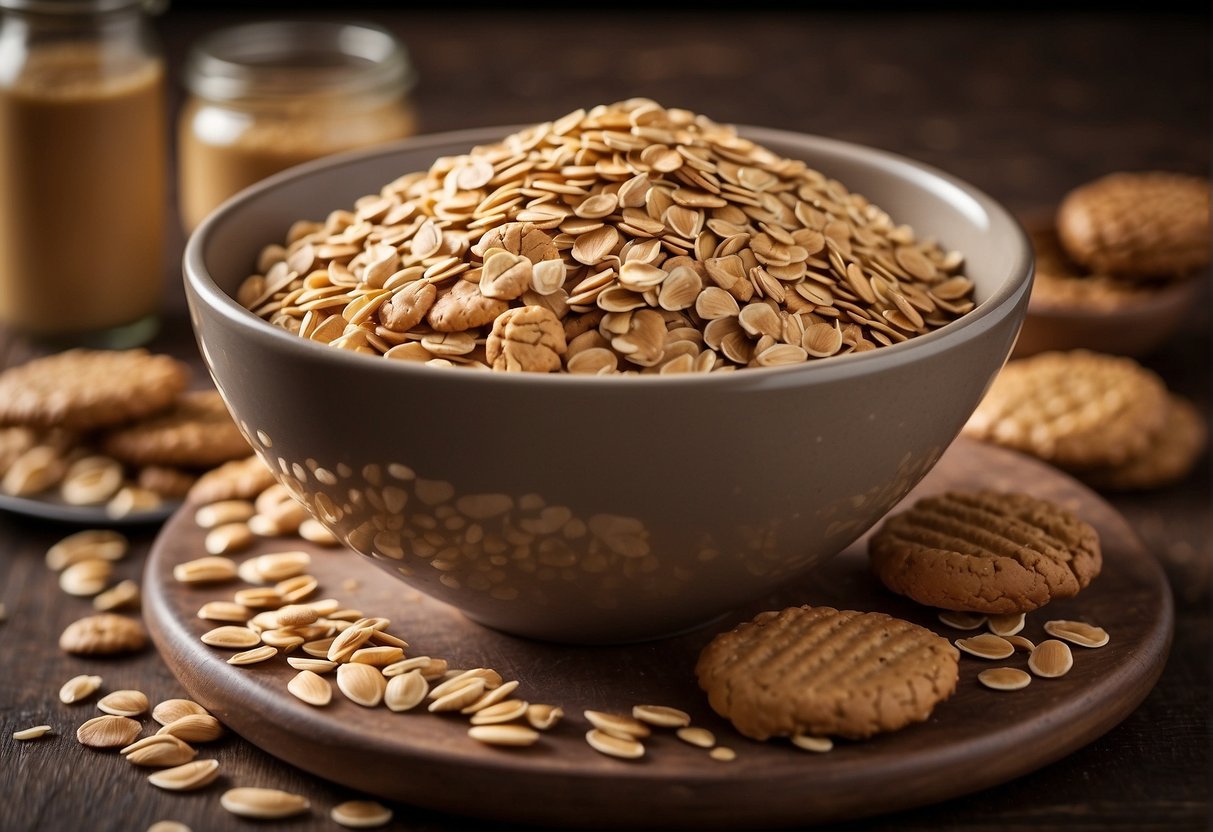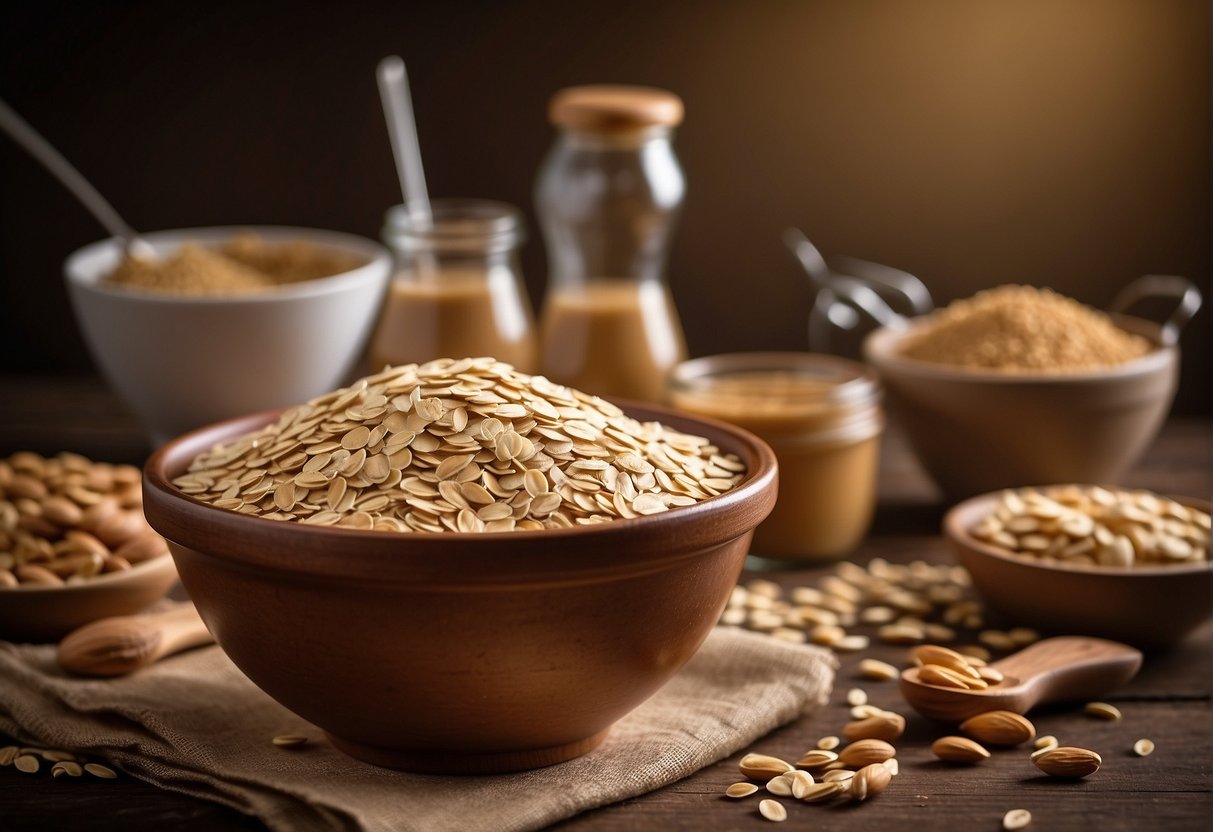Oatmeal peanut butter cookies are the perfect blend of two classic flavors, creating a delightful treat for cookie lovers everywhere. Combining the wholesome taste of oats with the rich creaminess of peanut butter, these cookies offer a satisfying balance of healthful ingredients and indulgent flavors. With a variety of recipes available, you can easily find one to suit your taste preferences and dietary needs.
One of the great things about oatmeal peanut butter cookies is their versatility. You can effortlessly customize the recipe by adjusting the sweetness of the cookies, using crunchy or smooth peanut butter, or even incorporating additional ingredients such as chocolate chips or dried fruits. With so many options, you can create your ideal version of this delightful snack.
Furthermore, oatmeal peanut butter cookies are not only delicious but also convenient to make. Many recipes require basic ingredients that you likely already have in your pantry, and there’s no need to chill the dough before baking. In just a short amount of time, you’ll be able to enjoy these soft, chewy, and addictive cookies that cater to both your sweet tooth and your health-conscious side.
Essential Ingredients

Choosing the Right Oatmeal
There are different types of oatmeal out there, but for peanut butter oatmeal cookies, old-fashioned rolled oats provide the best texture. Rolled oats are thicker than quick-cooking oats, resulting in a chewier cookie. When purchasing oats, make sure they are labeled as “rolled” or “old-fashioned.”
Types of Peanut Butter
The choice of peanut butter can greatly influence the flavor and texture of your cookies. You can use smooth or chunky peanut butter depending on your preference for a uniform or chunky texture. Both options work well in this recipe. Moreover, avoid using natural peanut butter as it can separate and yield inconsistent results.
Sweeteners and Flavors
To achieve a flavorful and well-balanced cookie, mix brown sugar with granulated sugar. The brown sugar adds a subtle depth to the cookie’s taste, while granulated sugar provides the classic sweetness. Additionally, vanilla extract enhances the flavors in your cookie, making it taste richer.
- Brown sugar: adds depth to the flavor
- Granulated sugar: provides classic sweetness
- Vanilla extract: enriches overall taste
Binding Ingredients
As crucial ingredients for binding and leavening your cookie dough, eggs serve an essential role in achieving the right texture. They help the cookies rise and maintain their structure while baking. It’s important to use eggs as directed in the recipe. However, if you need an egg alternative, some readers have had success using flax eggs.
In summary, while making oatmeal peanut butter cookies, use old-fashioned rolled oats, choose a suitable peanut butter, and balance the sweetness with the right sweeteners and flavors. Finally, bind the ingredients together with eggs or an egg substitute for the perfect cookie experience.
Preparation Basics

Mixing Techniques
Start by preheating your oven to the recommended temperature, usually around 350°F (175°C). As you wait for the oven to preheat, gather all your ingredients. In a large bowl, combine the butter, peanut butter, sugar, and brown sugar. Use an electric mixer to beat them until well-combined and fluffy. Next, mix in the eggs and vanilla extract.
Now, it’s time to incorporate the dry ingredients. In a separate bowl, whisk together the flour, oats, baking powder, and baking soda. Gradually add the dry mixture to the wet mixture, and use your mixer on low speed to combine until a uniform dough forms. Be careful not to overmix, as this can result in dense cookies.
Baking Tips
- Line your baking sheets: Use parchment paper or silicone baking mats to line your baking sheets. This will prevent the cookies from sticking and make for easy cleanup.
- Use a cookie scoop: To ensure evenly-sized cookies, employ a cookie scoop to portion out the dough. This also helps to achieve consistent baking times and a professional appearance.
- Spacing: Make sure to space the cookies about 2 inches apart on the baking sheets, as they will spread out during baking.
- Baking time: The baking time may vary depending on the size of your cookies and your oven. Keep an eye on them, and remove them from the oven once the edges are set and lightly golden, while the centers remain soft.
- Cooling: Allow the cookies to cool on the baking sheets for a few minutes before transferring them to wire racks. This helps to maintain the soft, chewy texture that makes oatmeal peanut butter cookies so delicious.
By following these basic preparation and baking tips, you can create a batch of irresistibly delicious oatmeal peanut butter cookies that are sure to impress everyone who tries them.
Baking and Cooling
Ideal Baking Temperatures
When baking oatmeal peanut butter cookies, it’s crucial to find the ideal temperature to achieve a perfectly soft and chewy texture. For these cookies, preheat your oven to 350 degrees F (175 degrees C). Before placing the cookie dough onto a baking sheet, line it with parchment paper. This will prevent the cookies from sticking to the surface and ensure an easy removal.
Remember to space the cookies appropriately on the baking sheet, as they will spread during the baking process. Each cookie scoop should be roughly one tablespoon in size.
Here’s a quick reference table for baking time and temperature:
| Oven temperature | Baking time |
|---|---|
| 350 degrees F | 10 to 12 minutes |
Keep an eye on the cookies while they bake, and remove them from the oven once the edges are lightly browned. It’s important to note that the cookies may appear slightly undercooked at the center, but don’t worry, they will firm up as they cool.
Cooling and Setting
After you’ve removed the cookies from the oven, let them cool on the baking sheet for 5 minutes. This rest period allows the cookies to continue setting and avoids them breaking apart when transferring. It’s a crucial step in achieving that perfect balance of softness and firmness in your oatmeal peanut butter cookies.
Once the cookies have cooled slightly, transfer them onto a wire rack to continue the cooling process. The wire rack allows for air circulation, which helps the cookies cool evenly, preserving their chewy texture. Be sure to let the cookies cool completely before storing them in a container. This ensures they maintain their structure and prevents them from becoming soggy.
Follow these simple steps in the “Baking and Cooling” process, and you’ll achieve the perfect oatmeal peanut butter cookies every time. Enjoy indulging in these delicious, perfectly-baked treats!
Storage and Preservation
Storing your freshly baked oatmeal peanut butter cookies properly is crucial to preserving their taste and texture. Follow these guidelines to ensure your cookies stay as delicious as the day you baked them.
Airtight Container: The most important aspect of storing cookies is to place them in an airtight container. This helps prevent them from becoming stale, as well as protecting them from absorbing other flavors in your cupboard or refrigerator. Make sure to lay a piece of parchment paper between layers of cookies to prevent them from sticking together.
Room Temperature Storage: To store your cookies at room temperature, simply place them in an airtight container and store in a cool, dry place away from direct sunlight. Keeping the cookies at room temperature will help maintain their soft and chewy texture for 3-5 days.
Refrigerator Storage: If you’re going to store the cookies in the refrigerator, make sure to use an airtight container, and let them come back to room temperature before serving. Storing them in the refrigerator will extend their freshness for up to a week. However, bear in mind that this can slightly alter their texture, making them a bit firmer.
Freezer Storage — Raw Dough: To freeze raw cookie dough, portion it into individual cookies and place them on a parchment-lined baking sheet. Freeze the dough balls for about an hour, then transfer them into an airtight container or freezer bag. This technique ensures your dough won’t stick together in storage. When you’re ready to bake the cookies, simply remove the desired number of dough balls and bake as usual, adding a few extra minutes to the baking time.
Freezer Storage — Baked Cookies: If you have already baked the cookies, let them cool completely before transferring them to an airtight container or freezer bag, separating layers with parchment paper. Frozen cookies will stay fresh for up to 3 months. To serve, allow the cookies to thaw at room temperature before consuming.
By following these storage and preservation methods, you can enjoy your oatmeal peanut butter cookies for an extended period. Remember that the key is maintaining an airtight environment to keep your cookies’ taste and texture intact.
Nutritional Information
Oatmeal peanut butter cookies can be a relatively healthy treat when made with wholesome ingredients. Let’s take a closer look at their nutritional contents.
Fiber: Both oatmeal and peanut butter are naturally rich in fiber. A medium-sized cookie typically contains around 0.3g of dietary fiber, which contributes to good digestion and may help regulate blood sugar levels. You can further increase the fiber content by adding extra whole grain oats or even incorporating flaxseeds into your cookie dough.
Nutrition Facts: The nutritional profile of an oatmeal peanut butter cookie varies depending on the specific recipe and ingredients used. However, a medium (2″ dia) cookie contains approximately 67 calories, with nearly 3g of total fat and less than 1g of saturated fat. The cookie also provides 9.18g of carbohydrates, 4.96g of sugars, and 52mg of sodium. It’s important to note that these values may fluctuate based on your recipe or portion size.
Healthy Ingredients: To make your cookies even healthier, consider using natural peanut butter, which is free of added sugar, preservatives, and hydrogenated oils. Brown sugar and whole wheat flour can also be substituted for their white counterparts, offering additional nutritional benefits such as vitamins and minerals. For an extra boost of nutrition, try mixing in some chia seeds, nuts, or dried fruits.
Remember to consider serving sizes when enjoying oatmeal peanut butter cookies. While they may be a more nutritious option compared to other baked goods, moderation is key to maintaining a well-balanced diet. Enjoy these tasty treats responsibly and feel good about indulging in a cookie packed with the benefits of fiber, nutrition, and healthy ingredients!
Recipe Variations and Tips
Texture and Flavor Adjustments
Experiment with different textures and flavors to make your oatmeal peanut butter cookies unique. If you prefer a chunky texture, use crunchy peanut butter instead of creamy. You can also add mixins such as chocolate chips, raisins, or pecans to make the cookies even more flavorful. If you’re seeking a more indulgent treat, consider using a monster cookie recipe, which often combines oatmeal, peanut butter, and an abundance of other mixins.
| Mixin | Quantity (Per Batch) |
|---|---|
| Chocolate chips | 1 cup |
| Raisins | 1 cup |
| Pecans | 1 cup |
Allergy-Friendly Alternatives
To cater to those with dietary restrictions or allergies, try making some adjustments to traditional cookie recipes. For a flourless version, increase the amount of oats in your recipe, and ensure they are certified gluten-free if necessary. Additionally, opt for a peanut butter alternative, like almond or sunflower seed butter, if you’re accommodating a peanut allergy.
To reduce the use of refined sugar in your cookies, consider using natural sweeteners like honey, pure maple syrup, or coconut sugar. However, be mindful that some substitutions may affect the texture and moisture content of your cookies, so you may need to modify proportions or baking times accordingly.